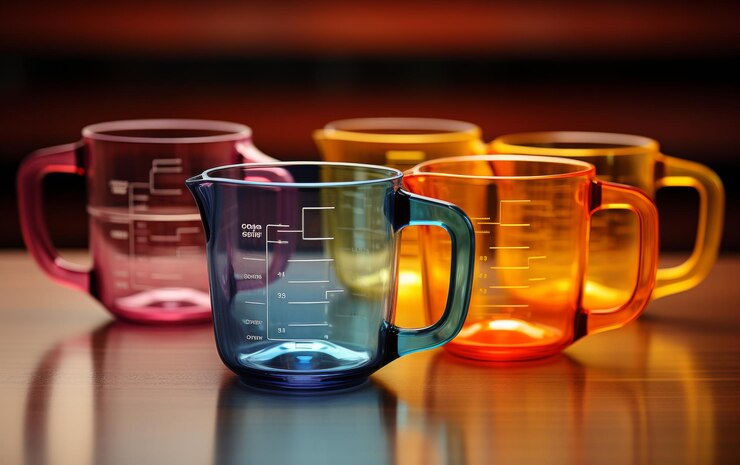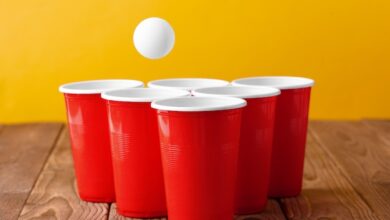How Many Ounces in a Cup? Your Ultimate Guide to Precise Measuring

Understanding accurate measurements is the cornerstone of successful cooking and baking. One of the most fundamental yet often confusing conversions is determining how many ounces are in a cup. This seemingly simple question unlocks consistent results in the kitchen, preventing culinary disasters like dense cakes or overly salty soups. Whether you’re scaling a recipe, substituting ingredients, or deciphering international cookbooks, mastering the relationship between cups and ounces is essential. This comprehensive guide delves deep into the nuances of cup-to-ounce conversions, exploring different ingredient types, measurement systems, and practical techniques to ensure your culinary creations turn out perfectly every time. Let’s demystify this crucial kitchen conversion and elevate your precision at the stove or oven.
Understanding the Basics: Fluid Ounces vs. Dry Ounces
The first critical concept to grasp is the distinction between fluid ounces and dry ounces, as this directly impacts the answer to “how many ounces in a cup.” Fluid ounces (fl oz) measure volume – the space an ingredient occupies. This is exclusively used for liquids like water, milk, oil, or broth. Dry ounces (oz), conversely, measure weight – the actual mass of an ingredient. Dry measurements apply to solid or bulk items like flour, sugar, grains, fruits, or chocolate chips. Confusing these two types of ounces is a primary source of measurement errors. A cup of feathers (lightweight, measured by volume) and a cup of lead pellets (heavy, also measured by volume) occupy the same space (volume) but have vastly different weights (dry ounces). Recognizing whether your recipe (or ingredient) requires volume (fluid ounces) or weight (dry ounces) measurement is the essential first step towards accuracy. This distinction underpins all reliable recipe execution.
The Standard Conversion: How Many Ounces in a Cup?
Within the US Customary System, the standard conversion provides a clear baseline: 1 US cup equals 8 US fluid ounces (fl oz) when measuring liquids. This is the golden rule for volume measurements of beverages, oils, extracts, and other pourable ingredients. However, the answer becomes less straightforward for dry ingredients due to the weight vs. volume distinction mentioned earlier. While a measuring cup holds 8 fluid ounces by volume, the weight (in dry ounces) of the ingredient filling that cup varies dramatically. For example, 1 US cup of all-purpose flour typically weighs around 4.25 to 4.5 dry ounces, while 1 US cup of granulated sugar weighs about 7 dry ounces. This variability is why professional bakers strongly prefer weight measurements (using a kitchen scale) for dry goods – it eliminates inconsistency caused by factors like how tightly flour is packed into the cup. Therefore, while “8 fluid ounces per cup” is absolute for liquids, the equivalent dry ounces per cup depend entirely on the specific ingredient’s density.
The Importance of Accurate Measurements in Cooking and Baking
Precision in measuring, directly tied to correctly converting how many ounces are in a cup, is non-negotiable for consistent culinary success, especially in baking which is often likened to chemistry. In baking, ingredients like flour, leavening agents (baking powder/soda), salt, and sugar interact in precise ratios. Using a cup of flour that’s densely packed (weighing significantly more than 4.5 oz) instead of lightly spooned and leveled can lead to a dry, crumbly, or tough result, as excess flour absorbs too much liquid and over-develops gluten. Similarly, in delicate sauces or custards, an extra fluid ounce of liquid can thin the consistency disastrously. Accurate measurements ensure recipe balance – the intended texture, rise, moisture level, sweetness, and seasoning. They also guarantee reproducibility; your award-winning cookies will taste the same every time. Furthermore, accuracy is crucial when scaling recipes up or down for different yields. Misunderstanding ounces per cup can lead to exponentially larger errors in doubled or halved batches. Investing effort in precise measuring translates directly to reliable, high-quality outcomes.
Measuring Dry Ingredients: Tips and Techniques
Measuring dry ingredients correctly requires specific techniques to achieve consistency and align with standard weight expectations when using cups. The key principle is to avoid packing the ingredient into the cup unless explicitly instructed (like for brown sugar). Instead, use the “spoon and level” method. First, fluff up the ingredient in its container using a spoon or fork to aerate it and break up clumps (essential for flour, cocoa powder, powdered sugar). Then, gently spoon the ingredient into your dry measuring cup until it mounds significantly over the rim. Finally, use the straight edge of a knife or offset spatula to level off the excess, sweeping it cleanly across the top of the cup. Never shake the cup or tap it firmly on the counter during filling, as this compacts the ingredient, leading to an over-measure. For ingredients like chopped nuts, berries, or chocolate chips, you can scoop or pour them into the cup, then level off, as packing isn’t a major concern. Always use standardized, nested dry measuring cups (usually made of metal or plastic) designed to be filled to the brim and leveled. Never use liquid measuring cups for dry ingredients, as you cannot accurately level them.
Measuring Liquid Ingredients: Best Practices
Accurately measuring liquid ounces in a cup demands a different approach and the right tools. Always use a clear liquid measuring cup, typically made of glass or plastic, featuring measurement markings (fluid ounces, milliliters, cups) on the side and a spout for pouring. Place the cup on a stable, level surface – not holding it in your hand, as this can tilt it and distort the reading. Bend down so your eyes are level with the measurement markings on the cup. Carefully pour the liquid in until the bottom of the meniscus (the curved surface of the liquid) aligns precisely with the desired line (e.g., 8 fl oz for 1 cup). Avoid estimating from above, as this parallax error leads to inaccuracy. For thick liquids like honey, molasses, or syrup, lightly coat the inside of the measuring cup with cooking spray or oil first. This allows the sticky liquid to pour out completely, ensuring you get the full measured amount without waste clinging to the cup. Double-check the measurement markings, as some cups include both metric (mL) and US Customary units (cups, fl oz). Using these techniques guarantees you get the true 8 fluid ounces per cup every time.
Variations in Cup Measurements: US Customary vs. Metric System
It’s vital to recognize that the standard “cup” is not universal globally, impacting the calculation of how many ounces are in a cup. The US Customary cup, used in this article, equals 8 US fluid ounces (approximately 237 milliliters). However, the Metric cup, commonly used in countries like Australia, New Zealand, Canada, and the UK in older recipes, is different – it measures 250 milliliters (approximately 8.45 US fluid ounces). Furthermore, the UK Imperial cup, now largely obsolete but occasionally encountered, is even larger at 10 Imperial fluid ounces (approximately 284 milliliters or 9.61 US fluid ounces). This variation means that using a US cup to measure ingredients for a recipe written with Metric cups will result in less liquid or dry ingredient by volume, potentially throwing off the recipe. Always check the origin of your recipe. Look for clues like “ml” or specific country references. When in doubt, using weight measurements (grams or ounces) with a kitchen scale is the most reliable way to ensure accuracy across different measurement systems, as weight is universally consistent regardless of the cup definition used by the recipe author.
Handy Conversion Chart for Common Measurements
Having a quick reference for converting between cups, fluid ounces, and common dry ingredient weights is invaluable. Here’s a practical chart:
| Measurement | Fluid Ounces (Volume) | Common Dry Ingredient Weights (Approx.) |
|---|---|---|
| 1 Cup | 8 fl oz | All-Purpose Flour: 4.25-4.5 oz Granulated Sugar: 7 oz Brown Sugar (packed): 7.5 oz Powdered Sugar: 4 oz Butter: 8 oz (by weight) Rolled Oats: 3.5 oz Honey/Syrup: 12 oz |
| 1/2 Cup | 4 fl oz | Flour: ~2.25 oz Sugar: ~3.5 oz |
| 1/4 Cup | 2 fl oz | Flour: ~1.1 oz Sugar: ~1.75 oz |
| 1 Tablespoon | 0.5 fl oz | Flour: ~0.25 oz Sugar: ~0.44 oz |
| 1 Teaspoon | 1/6 fl oz (~0.17 fl oz) | Flour: ~0.08 oz Sugar: ~0.15 oz |
Important Notes:
-
Liquids: 1 Cup = 8 fl oz consistently (US Customary).
-
Dry Weights: Vary significantly. Values above are common averages; always weigh for precision.
-
Butter: 1 US Cup = 2 sticks = 16 Tablespoons = 8 oz (weight).
-
Metric: 1 US Cup = 237 ml. 1 Metric Cup = 250 ml.
This chart emphasizes the critical point: while liquid conversions are fixed (1 cup liquid = 8 fl oz), dry ingredient weights per cup are approximations. For baking perfection, invest in a digital kitchen scale and use recipes providing weights in grams or ounces.
Conclusion
Understanding precisely how many ounces are in a cup – and recognizing the crucial difference between fluid ounces for volume and dry ounces for weight – is fundamental knowledge for any home cook or baker. While the rule of 8 fluid ounces per cup provides a solid foundation for liquids, the weight of dry ingredients in a cup requires careful technique (like spooning and leveling) and awareness of ingredient density. Embracing the use of proper tools – dry measuring cups for solids, liquid measuring cups for fluids, and especially a digital kitchen scale for dry ingredients – transforms guesswork into precision. Remembering the variations between the US Customary cup and other international standards further safeguards against recipe mishaps. By internalizing these principles and practicing accurate measuring methods, you gain control and consistency in the kitchen. This mastery empowers you to tackle any recipe with confidence, replicate your successes flawlessly, and truly elevate your culinary creations. Precision isn’t just pedantic; it’s the pathway to delicious, reliable results every time you cook or bake.
Frequently Asked Questions (FAQs)
Q1: Is 8 oz always equal to 1 cup?
A1: Only for liquids in the US Customary System. 8 fluid ounces of liquid (like water, milk, oil) equals 1 US cup by volume. However, 8 weight ounces (oz) of a dry ingredient like flour or sugar will not equal 1 cup. Due to varying densities, 8 oz (weight) of flour is about 1.77 cups, while 8 oz (weight) of sugar is roughly 1.14 cups. Always distinguish between fluid ounces (volume) and dry ounces (weight).
Q2: How many ounces are in a cup of flour?
A2: A standard US cup of all-purpose flour, measured correctly using the spoon-and-level method, weighs approximately 4.25 to 4.5 dry ounces. This weight can vary slightly based on factors like humidity, brand, and how it’s packed. For absolute accuracy in baking, weighing flour (around 120-125 grams per cup) is highly recommended.
Q3: How many ounces are in a cup of water?
A3: A US cup of water measures exactly 8 fluid ounces by volume. At room temperature, 8 US fluid ounces of water also weighs approximately 8.3 dry ounces (or 236.6 grams) due to water’s density. This close equivalence (1 fl oz water ≈ 1.04 oz weight) is a convenient coincidence but doesn’t hold true for other liquids or ingredients.
Q4: Does 4 ounces equal half a cup?
A4: For liquids: Yes, 4 fluid ounces equals 1/2 US cup. For dry ingredients: It depends on the ingredient. 4 dry ounces of flour is roughly 0.9 cups (almost a full cup), while 4 dry ounces of granulated sugar is about 0.57 cups (a little over half a cup). Always specify fluid ounces for liquids and check weights for dry goods.
Q5: Are UK and US cup measurements the same?
A5: No. The standard US Customary cup is 8 US fluid ounces (237 ml). The UK Imperial cup (now rarely used) was 10 Imperial fluid ounces (284 ml). Many Commonwealth countries (Australia, NZ, Canada) use a Metric cup of 250 ml (approximately 8.45 US fl oz). Using the wrong cup type will lead to inaccurate measurements. Check your recipe’s origin and units carefully.



